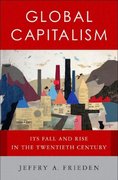Question
1. Explain the following: a. The principal causes of high population growth in developing countries and the major consequences. b. The notion of hidden momentum
1. Explain the following: a. The principal causes of high population growth in developing countries and the major consequences. b. The notion of hidden momentum of population growth c. The theory of demographic transition. 2. Outline and comment on: a. The arguments AGAINST the idea that population growth is a serious problem in developing nations. b. the arguments IN SUPPORT of the idea that population growth is a serious problem in developing nations. c. The various policy options available to developing countries' governments in their attempt to modify or limit the rate of population growth. 3. Suppose that in India, a minimum wage is established in the modern sector above the market clearing wage, while the rural traditional wage is market determined at a lower level than in the modern sector. a. Describe the impact of this policy on the rural labour force, urban unemployment, and the rural wage. b. Will the modern sector wage be equal to the traditional sector wage after markets equilibrate through migration? Explain. c. What effect might moving costs have on the equilibrium you described in part (b)? d. What effect might the introduction of factories to rural areas have on the equilibrium you described in part (b)? e. Suppose that the rural wage is $2 per day. Urban modern sector employment can be obtained with a probability of 0.24 and pays $4 per day. The urban informal sector pays $1 per day. Using this information, and making assumptions as needed, predict whether there will be any rural-to-urban or urban-to-rural migration? Explain your reasoning, stating explicitly any simplifying assumptions, and show all your work.4. "The key to solving the serious problem of excess rural-urban migration and rising urban unemployment and underemployment in developing countries is to restore a proper balance between urban and rural economic and social opportunities." Discuss the reasoning behind this statement and give a few specific examples of government policies that would promote a better balance between urban and rural economic and social opportunities. 5. Read the article on Pathways out of Poverty and answer the following questions. a. What is the Progresa/Oportunidades program, and what does it try to accomplish? b. How does it try to do so - what are the key program features and innovations? c. Why make the cash transfers conditional? What are the possible benefits as well as the drawbacks? d. Specifically, how does Progresa work to improve nutrition? e. Specifically, how does Progresa work to improve education?
Step by Step Solution
There are 3 Steps involved in it
Step: 1

Get Instant Access to Expert-Tailored Solutions
See step-by-step solutions with expert insights and AI powered tools for academic success
Step: 2

Step: 3

Ace Your Homework with AI
Get the answers you need in no time with our AI-driven, step-by-step assistance
Get Started


